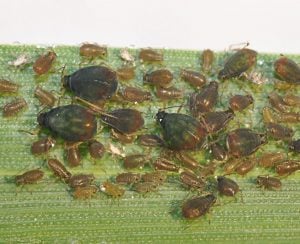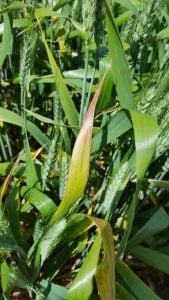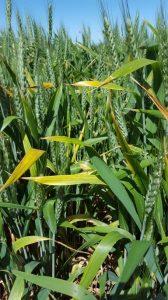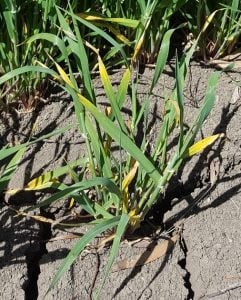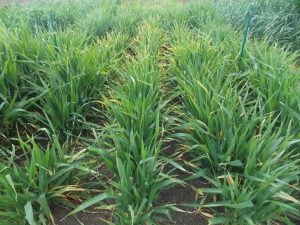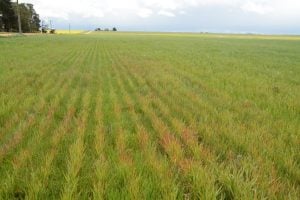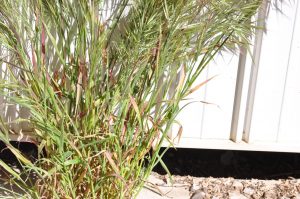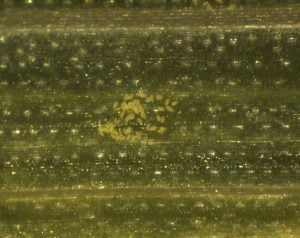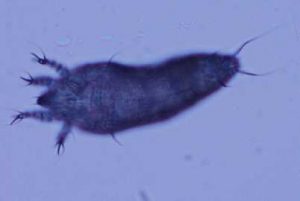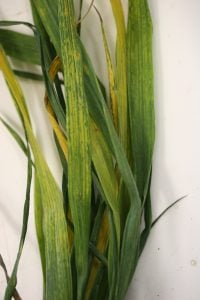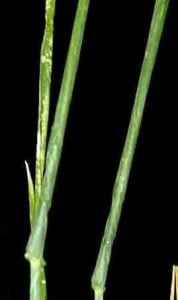Cereal crops are infected by a number of viruses but yellow dwarf viruses (such as Barley yellow dwarf virus (BYDV) and Cereal yellow dwarf virus (CYDV) and Wheat streak mosaic virus (WSMV) are the most common in western Victoria.
Yellow Dwarf Viruses (YDVs)
Yellow dwarf viruses are a group of closely related virus species belonging to the family Luteoviridae. Yellow dwarf disease is the most widely distributed and most destructive virus disease of cereals. Yield loss is greatest from infection early in the growing season which can be up to 80 per cent in severe cases where a susceptible variety has become infected soon after sowing. YDVs are only transmitted from infected to healthy plants by aphid vectors. They are transmitted by a number of aphids but the oat aphid (Rhopalosiphum padi) and the corn aphid (Rhopalosiphum maidis) are the most common YDV vectors in western Victoria and across Australia.
Over 150 plant species within the Poacae family are characterised as hosts of YDVs, including food crops such as wheat, barley, oat and corn. YDV infection has a negative effect on plant growth as it decreases root biomass, diminishes plant vigour and greatly reduces grain yield and quality.
The most common symptoms of YDV infection are plant stunting and leaf discoloration (depending on the crop; either yellow or red) which starts from the tip of the leaf and spreads towards the base. The severity of this disease largely depends on the inoculation time; plants are at their most vulnerable when they are infected in the early growth stage. In addition, abiotic factors, including drought and heat, can intensify severity of this disease.
Hosts
YDVs can persist in most small grain cereals (wheat, barley oats), corn and many perennial and annual grasses. The four most important grass species acting as reservoirs for BYDV are kikuyu, paspalum, couch grasses and African lovegrass.
Disease Cycle
The disease occurs on most cereals and numerous grasses but is not known to affect dicotyledonous plants. Infection in the plant is restricted to the conducting tissue (phloem).
YDVs are not transmissible through seed, soil, sap or by insects other than aphids. Aphids migrate into cereal crops in autumn and spring. The extent of any autumn migration is important as early infection of YDV in crops can affect crop yields severely. Aphids need to feed on an infected plant for at least 5 minutes followed by a latent period of 12 hours before the virus will transmit to a healthy plant. Aphids remain infected for the rest of their life. Ten species of YDV have been identified, but in Australia the species BYDV-PAV is the most common.
What to Look For
Symptoms of YDV infection can be confused with those caused by nutrient deficiencies, waterlogging or other plant stresses that cause yellowing and striping of leaves.
Besides changing colour, infected plants are stunted or dwarfed. In severe infections, heads may fail to emerge or fewer tillers may develop and sterility is not uncommon. Leaf symptoms differ between wheat, barley and oats.
Wheat
Infected wheat plants develop a slight to severe yellowing or pale striping between veins (interveinal chlorosis) in young leaves. Leaf tips can also die. If a sensitive variety is infected before tillering the plant is usually stunted, has fewer tillers and more sterile ones. Grain matures early, yield is greatly reduced and grain is shrivelled. Effects are milder with a late infection.
Barley
In barley, YDV infection causes a characteristic bright yellowing of the leaves (particularly older leaves) and pale yellow stripes between the leaf veins plus chlorotic blotching of young leaves. Early infected barley plants are stunted and produce low grain yields and shrivelled grain. Tillering can be stimulated by infection, but most tillers then develop poorly and produce sterile heads. Plants infected after tillering have milder symptoms and yields are less severely affected.
Oats
In oats, the symptoms of YDV infection are very striking. Most varieties develop reddening (crimson, pink or purple colour) of the young leaves from the tips down, which sometimes begins as blotching especially on older leaves. Stunting, an increase in sterile tillers or abortion of florets result in low grain yields and shrivelled grain. As in wheat and barley, the effect of YDV infection is greatest in early-infected plants.
Grasses
There are no obvious symptoms of YDV infection in many grasses (e.g. kikuyu grass). However, some grasses (e.g. annual and perennial ryegrasses) may develop reddening or purpling of leaf tips while others (for example phalaris) may develop yellowing of older leaves.
Wheat Streak Mosaic Virus (WSMV)
WSMV is transmitted through infected seed, mechanically and by the wheat curl mite (Aceria tosichella). The wheat curl mite is invisible to the naked eye. This virus has been found in all wheat growing regions of Australia.
What to Look For
Symptoms on leaves could be seen as light green streaks parallel to the veins. The streaks develop into blotches and form a pattern of yellow and green mosaic. Infection at an early stage can cause heads developing no seed or shrivelled grain and stunting. Mite symptoms in plants could coincide with virus symptoms, showing rolling of leaves from margins to inwards.
Yellow and green streak symptoms.

